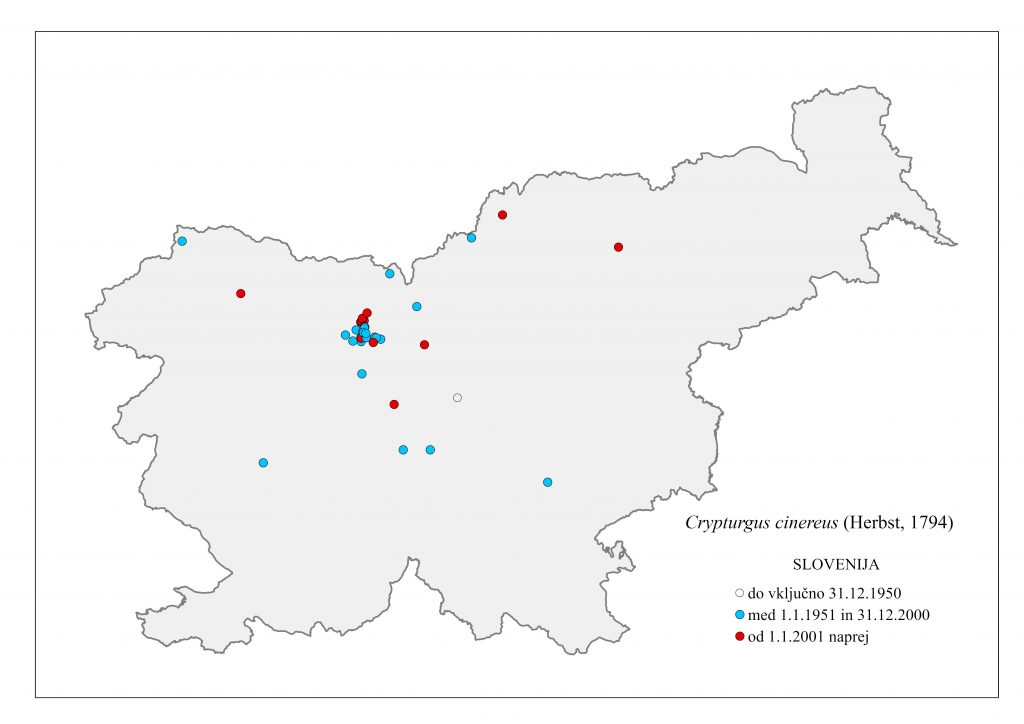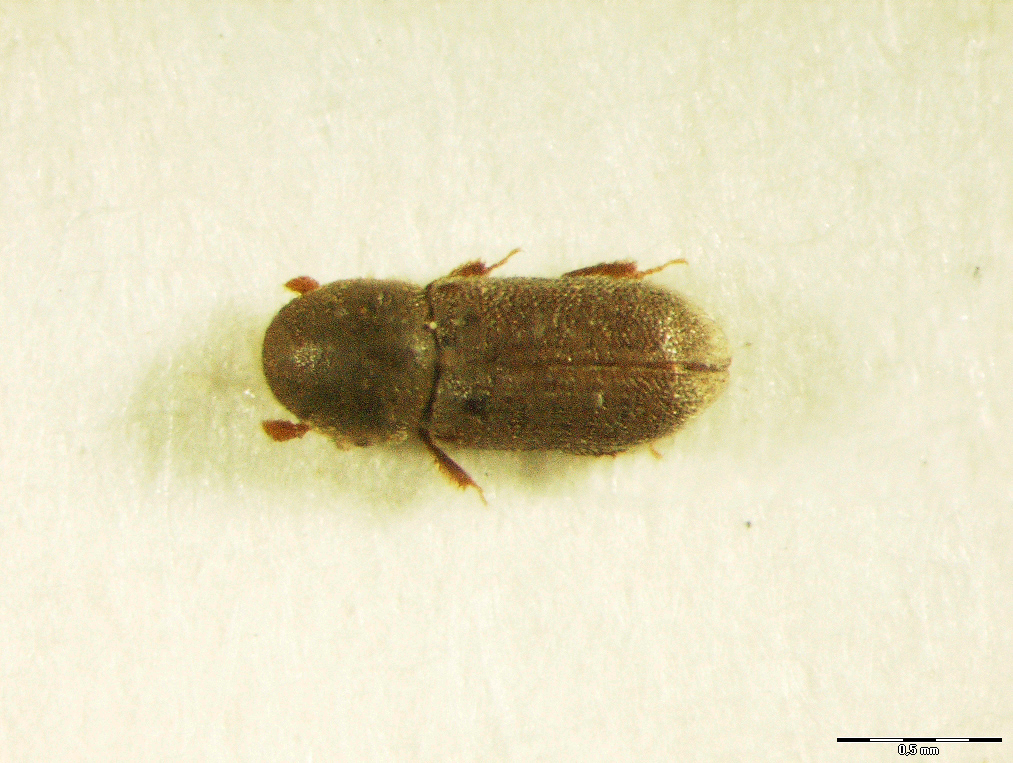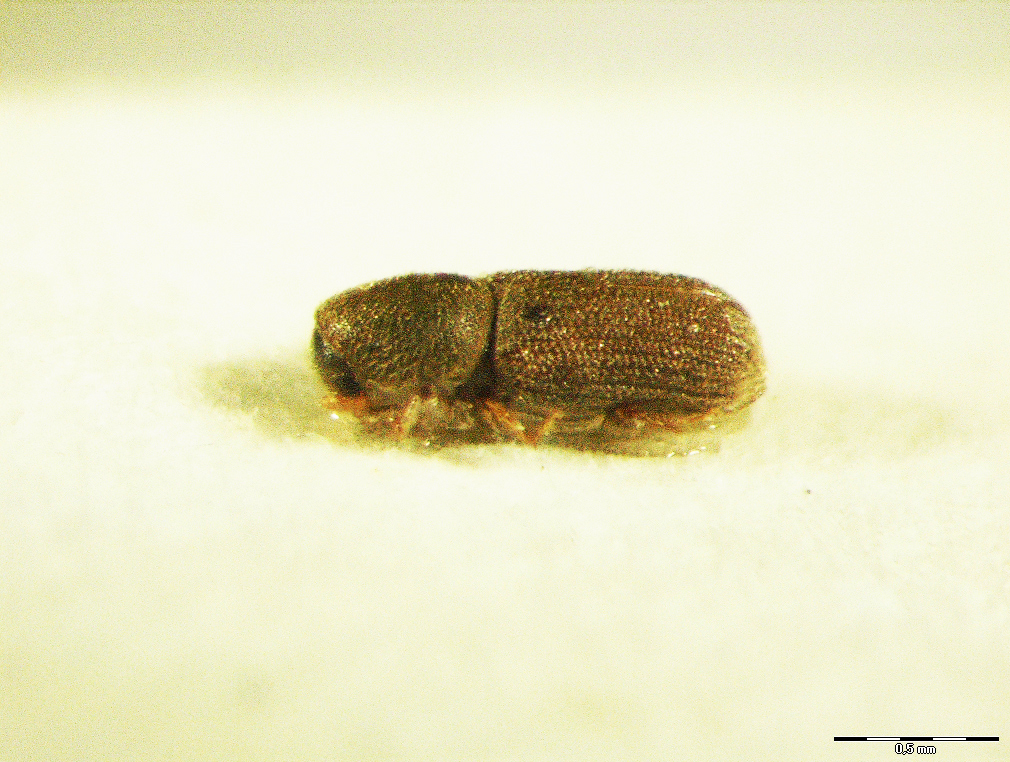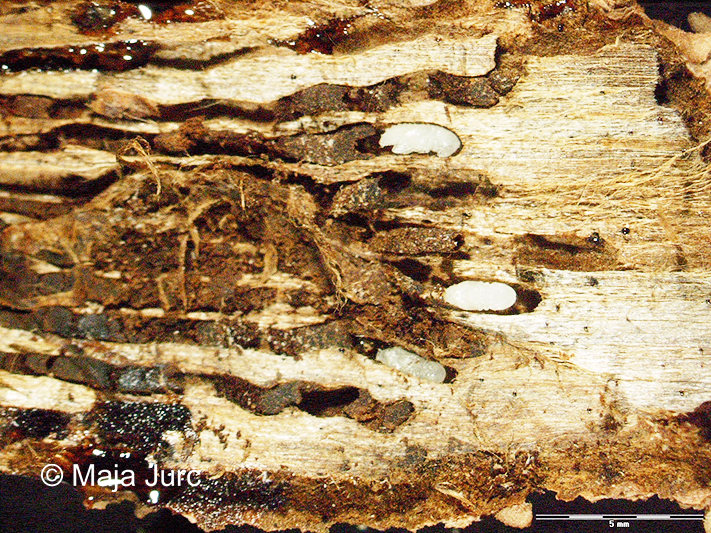23.01. Crypturgus cinereus (Herbst, 1794)
Presence
E: AU BE BU BY CR CT CZ DE EN FI FR GE GR HU IT LA LS LT LU MC NR NT PL RO SK SL SP ST SV SZ UK YU
A: ES FE HEI JIL MG NC TR WS
Figure 87: Crypturgus cinereus, dorsal, lateral (Photo: Maja Jurc)
Older catalogs and keys – citations of name
Brancsik, 1871: Crypturgus cinereus (Herbst); Grüne 1979: Crypturgus cinereus Herbst, 1793; Freude, Harde, Lohse 1981: Crypturgus cinereus Herbst; Titovšek 1988: Crypturgus cinereus (Herbst); Pfeffer & Knížek 1993: Crypturgus cinereus Herbst, 1793; Pfeffer 1995: C. cinereus Herbst, 1793.

Figure 88: Crypturgus cinereus, distribution map according to historical and recent data
Ecology and presence in Slovenia
The species is distributed in Europe, the former Yugoslavia, Corsica, the Caucasus, Asia Minor and Siberia. It inhabits the northern part of Slovenia, and is particularly common around Kranj, where it is often caught in traps (Figure 88). Hosts include Pinus halepensis, P. heldreichii, P. nigra, P. strobus, P. pinaster, P. pinea, P. mugo, P. sylvestris, Picea abies, P. obovata, P. orientalis, Abies alba, A. sibirica, and Juniperus spp.. Monogamous, it develops two generations per year, swarming in April and May. The tunnel system is irregularly shaped, the maternal galleries an extension of the maternal gallery of a larger bark beetle that has previously colonised the host tree. C. cinereus (and other species in this genus) are therefore also called “space parasites”. In Slovenia, the species has been found only on P. abies, where it extended the tunnel systems of the Ips typographus, Pityogenes chalcographus and Polygraphus poligraphus. The body is black to brown, matt. Adult length is 1.1-1.3 mm, the largest specimens may reach 1.4-1.6 mm. The neck shield is distinctly reticulate (Figure 87). As a distinctly secondary species, it only colonises dying and dead trees that have already been destroyed by other bark beetles and is therefore of no economic importance. C. cinereus is an important decomposer of dead trees as a secondary saproxyle.



